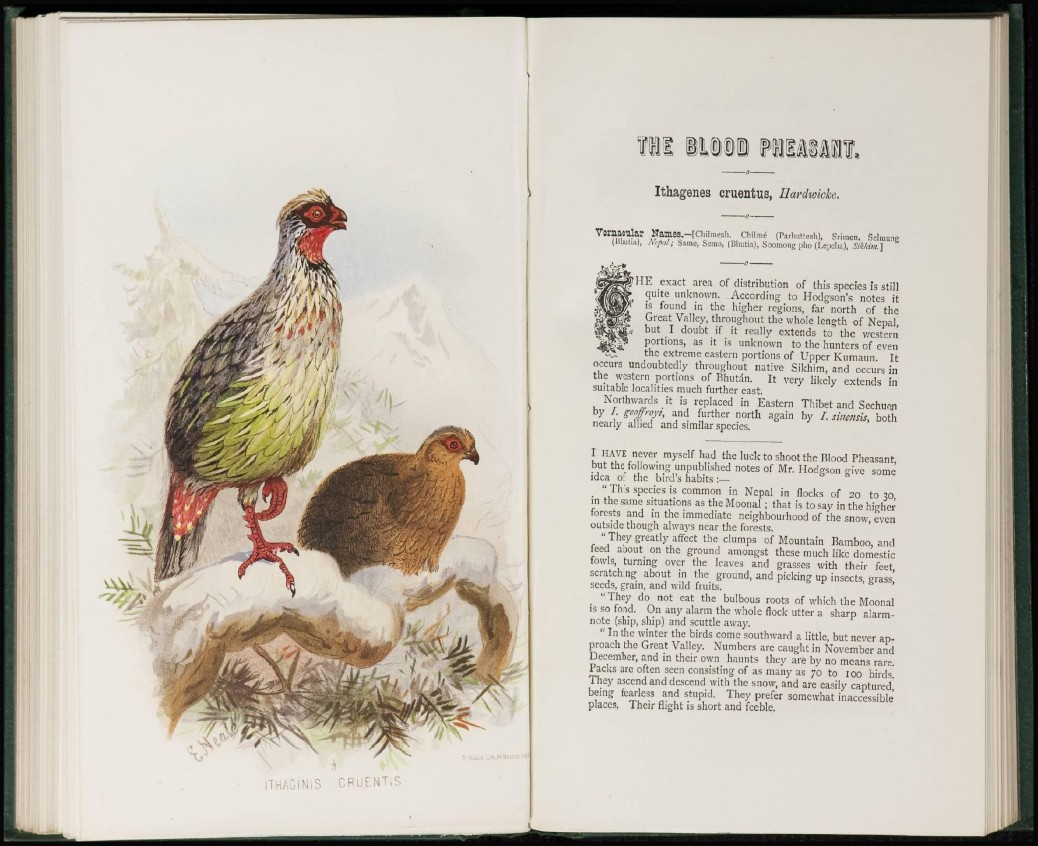
Ithagenes cruentus, Hardwicke.
VernaeuUr HaaeS.-[Chilmeah. CMlrae (Parbutreah), Somen, Selnuinr;
(Bhutia), Nepal; Same, Serao, (Bhutia), Soomong pho (Lepcha), SMm.]
HE exact area of distribution of this species is still
quite unknown. According to Hodgson's notes it
is found in the higher regions, far north of the
Great Valley, throughout the whole length of Nepal,
but I doubt if it really extends to the western
portions, as it is unknown to the hunters of even
the extreme eastern portions of Upper Kumaun. It
occurs undoubtedly throughout native Sikhim, and occurs in
the western portions of Bhutan. It very likely extends in
suitable localities much further east.
Northwards it is replaced in Eastern Thibet and Sechuen
by /. geoffroyi, and further north again by I, sinensis, both
nearly allied and similar species.
I HAVE never myself had the luck to shoot the Blood Pheasant,
but the following unpublished notes of Mr. Hodgson give some
idea of the bird's habits :—
" This species is common in Nepal in flocks of 2 0 to 30,
in the same situations as the Moonal ; that is to say in the higher
forests and in the immediate neighbourhood of the snow, even
outside though always near the forests.
"They greatly affect the clumps of Mountain Bamboo, and
feed about on the ground amongst these much like domestic
fowls, turning over the leaves and grasses with their feet,
scratching about in the ground, and picking up insects, grass,
seeds, grain, and wild fruits.
" They do not eat the bulbous roots of which the Moonal
is so fond. On any alarm the whole flock utter a sharp alarmnote
(ship, ship) and scuttle away.
" In the winter the birds come southward a little, but never approach
the Great Valley. Numbers are caught in November and
December, and in their own haunts they are by no means rare.
Packs are often seen consisting of as many as 7 0 to 1 0 0 birds.
They ascend and descend with the snow, and are easily captured,
being fearless and stupid. They prefer somewhat inaccessible
places. Their flight is short and feeble.